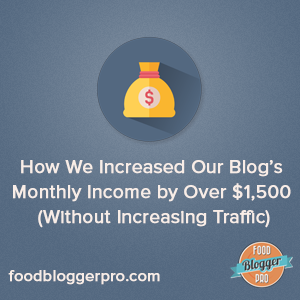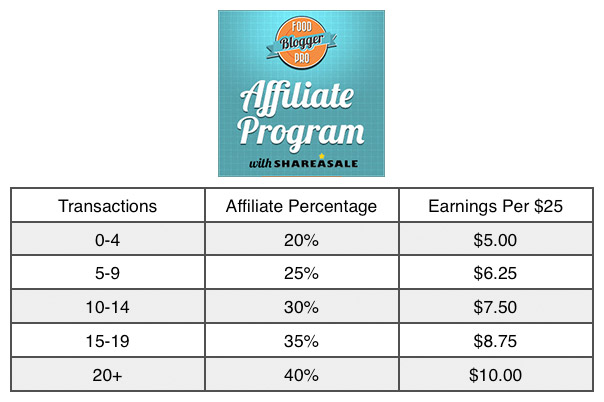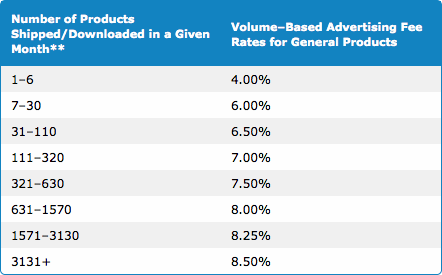 Traffic represents tangible numbers that allow you to easily see how your blog is performing, but it’s only half the battle when it comes to monetizing your blog.
Traffic represents tangible numbers that allow you to easily see how your blog is performing, but it’s only half the battle when it comes to monetizing your blog.
Yes, you need to be smart about ways to increase traffic to your blog. You also need to be smart about ways to increase your effectiveness at monetizing the traffic that is already coming to your blog.
The good news is that this doesn’t require you to squeeze every last penny from your blog readers by showing more ads or pitching more products. Quite the opposite, actually. You want to be squeezing every last penny from the advertisers and affiliates you work with so you don’t have to show more ads and pitch more products to your readers.
In this post I’m going to share an example of a change we made with Pinch of Yum to increase our monthly income by over $1,500. I’ll also share how this information impacted the way we structure payments for Food Blogger Pro affiliate program.
A Pinch of Yum case study
Pinch of Yum (the food blog that Lindsay and I run) is an affiliate for a hosting company called Bluehost. We have three places were we share the affiliate links for Bluehost. The how to start a food blog page, the resources for food bloggers page, and in the list of income sources on the monthly income and traffic reports. Over the past couple months we averaged between 30–40 signups a month. I was happy with the commissions we were earning each month and didn’t really think much about it…until I got an email from a Food Blogger Pro member named Jacob (from Home Tree Atlas). Jacob ended his email with this:
That reminds me: Did you ever negotiate with BlueHost to increase the standard commission?
The thought had never crossed my mind, but I knew it was a great idea.
That day I sent an email to Bluehost and explained the situation, pointing out the fact that we were consistently sending 1–2 quality sign ups a day. I pointed out the fact that other hosting companies have tiered pricing and increase their payout according to the number of signups (here’s an example). I ended the email by asking if they would considering increasing our commission.
A couple days later I received an email back notifying me that our commissions had been increased. It wasn’t increased to the number I had asked for, but it was an increase none-the-less. The increase in commissions will result in an extra $1,500 – $2,000 per month for Pinch of Yum (depending on the number of signups that happen).
We don’t have to show more ads, we don’t have to pitch a new product, and we don’t have to ask our readers to sign up for a new service. Nothing changed with Pinch of Yum except for the amount we were earning from each sign up, and it all came about because of a simple email.
I owe a huge thank you to Jacob for the suggestion. Thank you Jacob.
What you need in order to ask for a commission increase
There are a few things that you need in order for this to work:
- You need to be an activate affiliate.
- You need to have the contact information for the affiliate program manager. You can usually get this from the affiliate page on the company’s website.
- You need to have some justification for why you should receive an increase in your commission (i.e. we’ve had an average of $500 of sales a month sent your way from our blog).
#1 and #2 are pretty easy. #3 is a bit tougher. It’s also the most important. If you don’t have numbers that you can provide as justification for an increased commission then you should wait to ask for it. It’s important that you have a good relationship with affiliate program managers, and badgering them with requests to increase your commissions isn’t a good way to get it.
Structured commission increases
Many companies will have automated commission increases for their affiliates. This allows the affiliate software to keep track of the number of sales that are happening and increase the commissions accordingly. An example is the Amazon Associates Program:
This type of system automates the commission increases and makes it easier to reward affiliates that are sending the most sales. In cases like this your chances are pretty slim of getting an increase on your affiliate percentage by asking, because they’ve built the increased commission into the system.
Be sure to look closely at where the biggest percentage jumps are. With Amazon, the first jump goes from 4% to 6%. If you’re selling 2-3 products a month with Amazon it would be worth your time to see if there’s a way to increase that number so you can in turn increase your commission percentage.
The tiered commission pricing setup makes a lot of sense. It rewards valuable affiliates and ensures that affiliates don’t have to constantly ask for commission increases. As I learned about this setup I was actually inspired to take a closer look at the Food Blogger Pro affiliate program and make some changes.
Tiered pricing with Food Blogger Pro
My hope for Food Blogger Pro is threefold.
- To create a place where people can learn, connect, and feel successful.
- To create a profitable business.
- To create a business that helps other people become profitable.
The third point ties in directly to a big change that we’re making to the Food Blogger Pro affiliate program: We’re switching to tiered commissions!

With this setup, you can cover the cost of your membership if you have five transactions a month, earning you $31.25. I really love the idea of members being able to cover the costs of their membership through the affiliate program.
At the highest level, you can earn $10 a month per transaction. It’s similar to having your own small membership site. It’s not going to make you millions, but a recurring $10 a month per member will allow you to add a significant revenue stream to your blog income.
Remember that the FBP affiliate program is a lifetime recurring program. In other words, you get credit for every month’s transaction for as along as the person is a member of FBP.
If you’re an FBP affiliate and you have questions feel free to drop me an email – [email protected]
If you’d like to signup for the FBP affiliate program you can do so here.
What it means for you
So what does all this commission increase stuff mean for you and your blog? It depends.
If you’re just getting started then this blog post is simply an awareness piece. Keep it in mind as you grow your blog and continue to pay attention to where your affiliate sales are coming from.
If you’re a bigger blog and you have some established relationships with different affiliate programs then I’d encourage you to check in with them and ask if a commission increase would be possible. But remember, only do this if you have justification for asking for the increase.
How did it go?
I’d love to hear if you have any success with increasing your commissions as an affiliate. I’d also love to hear if it’s something you’ve ever asked for in the past and how that went.
